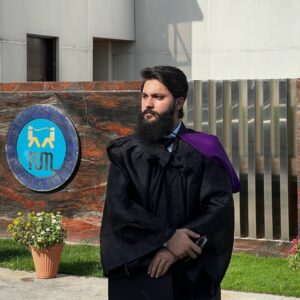Air pollution in South Asia has evolved from a seasonal nuisance into a chronic public‑health and development emergency. Winter smog over Delhi, thick with smoke, dust, and combustion byproducts, is the most visible manifestation, but the problem extends across capitals and major cities, including Dhaka and Lahore, where fine particulate matter (PM2.5) routinely exceeds safe limits by an alarming margin. Independent monitors and academic studies show this is not an episodic crisis but a sustained assault on life expectancy, economic productivity, and human dignity.
Magnitude and Human Cost
PM2.5 particles are minuscule, about 2.5 micrometers in diameter, yet their impact is massive because they penetrate deep into the lungs and enter the bloodstream. Global assessments attribute millions of premature deaths annually to airborne particulates and household pollution; in South Asia, the toll is disproportionately high. Research indicates that severe, persistent exposure in cities like Delhi reduces average life expectancy by years and accelerates cardiovascular, respiratory, and neurological diseases. Newer studies also link PM2.5 exposure to faster cognitive decline and heightened risk of stroke, raising the long‑term social and economic costs far beyond immediate hospital visits.
Multiple Sources, One Crisis
The drivers of pollution are complex and overlapping: vehicular emissions, coal‑fired power plants, industrial outputs, construction dust, unpaved roads, and seasonal agricultural burning all contribute. Meteorological factors, especially winter temperature inversions, trap pollutants close to the surface, turning ordinary emissions into lethal smog. Because studies vary in their attribution of share‑of‑responsibility, policymaking often stalls over debates about which source to prioritize, even though evidence is clear that comprehensive action across sectors is necessary.
Poisoned Air: Wide Consequences
The burden falls heaviest on the poor, outdoor workers, and children, who have limited access to clean indoor environments or quality healthcare. Lost workdays, increased medical expenses, and long‑term disability translate into measurable economic losses for families and nations. The aggregate impact undermines human capital formation and strains public health systems, creating a feedback loop that impedes development.
Gaps in Policy and Implementation
Despite abundant research and recurring public attention, policy responses remain fragmented and uneven. Monitoring networks are improving, but are not yet ubiquitous or harmonized regionally. Enforcement of emissions standards is inconsistent; urban planning rarely integrates air‑quality objectives, and incentives for cleaner energy and transport are insufficient. The result is a patchwork of short‑term fixes, emergency school closures, driving restrictions, and advisories that do little to alter long‑run exposure.
What Effective Response Looks Like
A durable response requires multi‑level, multi‑sectoral strategies. Immediate measures should include ramped‑up real‑time monitoring, targeted public‑health alerts, and protections for vulnerable populations. Medium‑term actions must focus on accelerating the shift to clean energy, retrofitting or retiring high‑emission power plants, expanding affordable public transit, tightening industrial emission controls, and curbing crop‑residue burning through viable agricultural alternatives. Urban design must prioritize green infrastructure, dust suppression, and improved waste management. Critically, policy must be backed by transparent data, accountability mechanisms, and stable financing.
The Case for Regional Cooperation
Air pollution ignores national borders; pollutants emitted in one jurisdiction affect neighboring populations. This calls for coordinated regional strategies: shared monitoring frameworks, joint research, cross‑border emergency protocols, and pooled funding for large‑scale interventions. South Asia can learn from cities that have reduced pollution through integrated strategies, adapting those lessons to its unique demographic and economic realities. Regional cooperation would also leverage diplomatic channels to secure investment and technology transfer for cleaner fuels and industrial processes.
Moral Imperative and Economic Sense
Addressing air pollution is both a moral necessity and an economic imperative. Saving lives, protecting children’s cognitive development, and reducing the burden of chronic disease are ends in themselves. But reducing pollution also yields economic returns: higher labor productivity, lower healthcare costs, and greater attractiveness for investment. Framed this way, ambitious pollution control is an investment in human capital and national resilience.
Conclusion
The polluted air that stretches from Delhi to Lahore is a shared crisis that demands sustained, coordinated action. Piecemeal responses and political hedging will only delay the inevitable reckoning of lives lost and livelihoods destroyed. What’s required now is decisive leadership, science-driven policy, cross-sector collaboration, and regional solidarity. Only then can South Asia transform a perilous environmental trend into an opportunity to safeguard health, spur green growth, and restore clean air for future generations.



